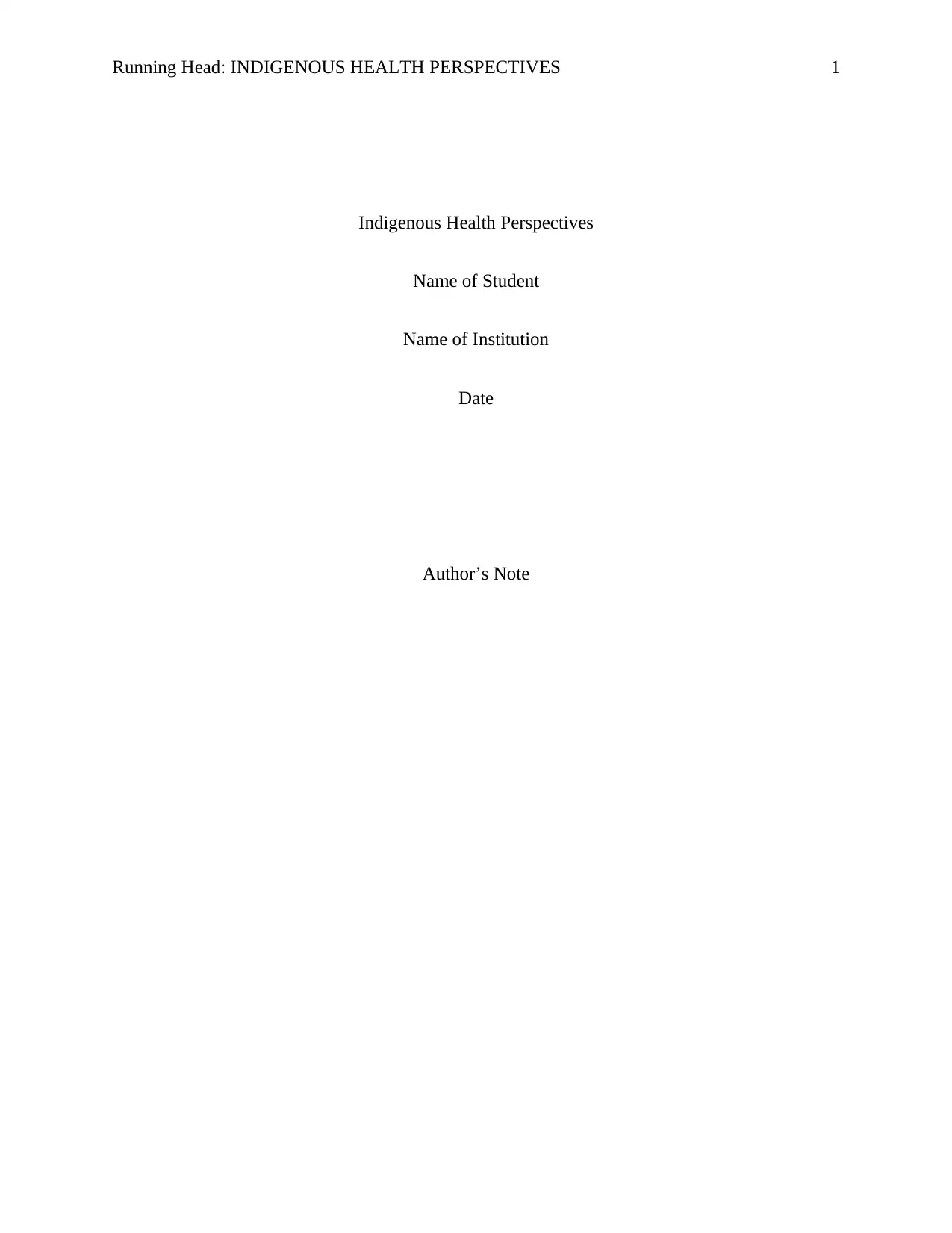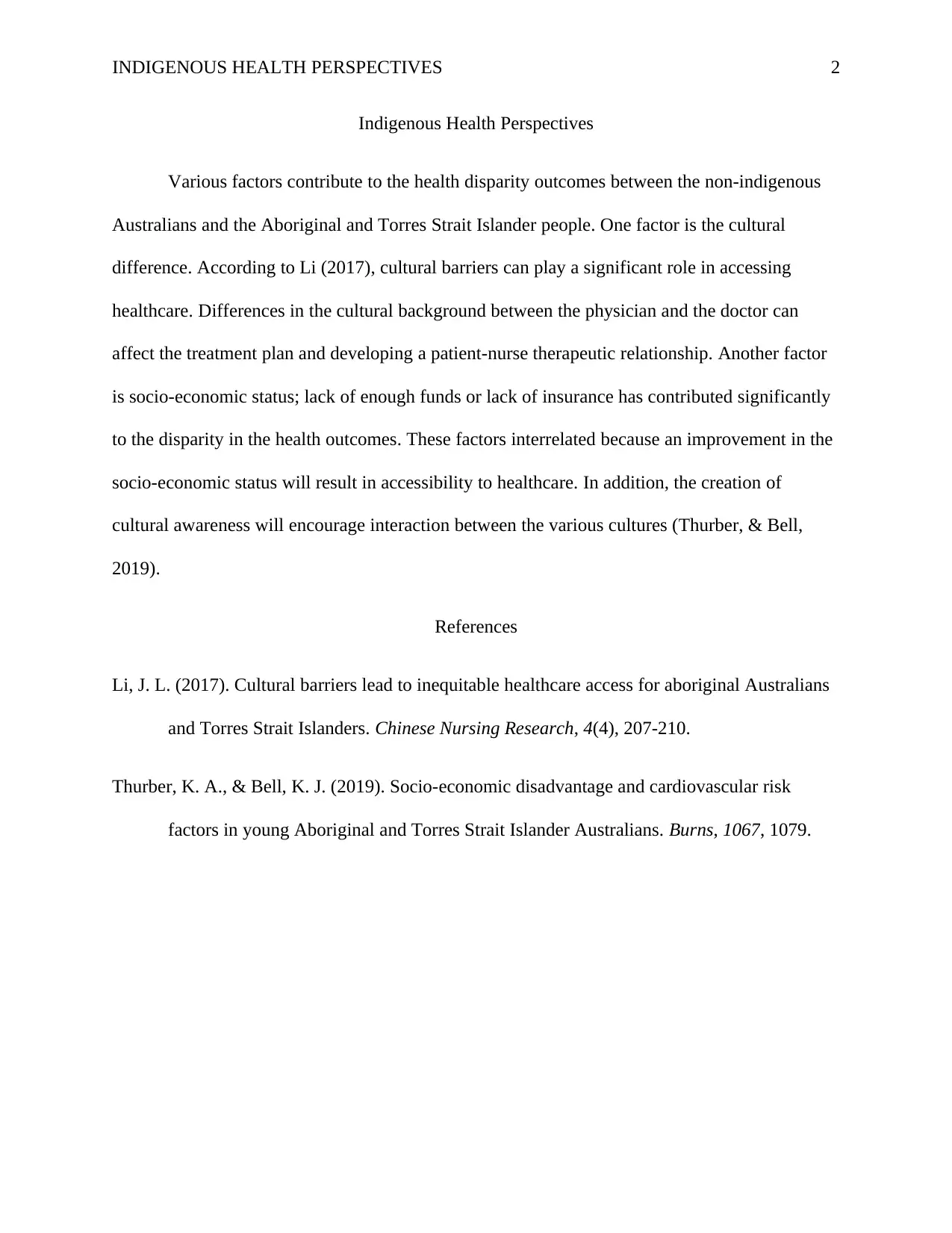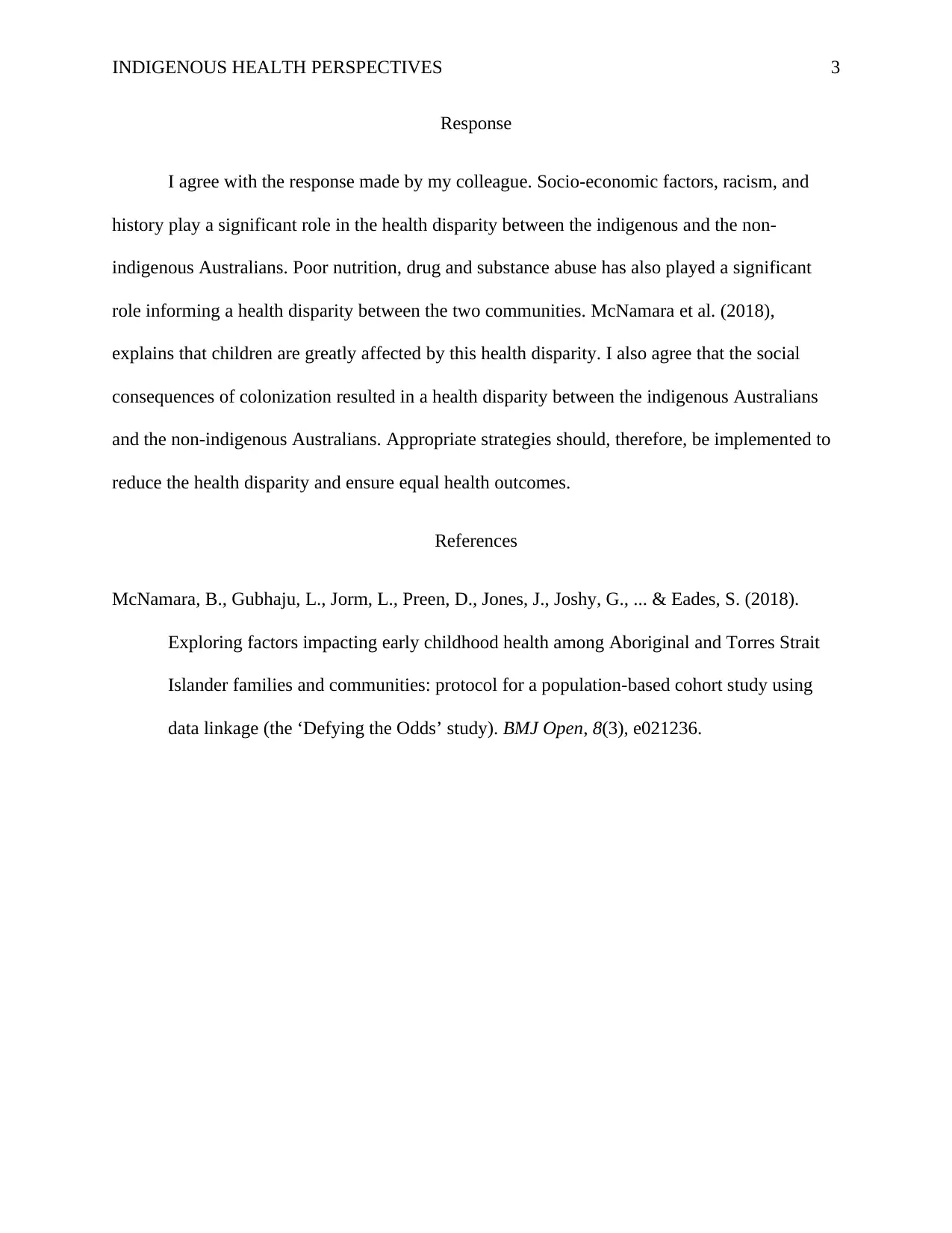Indigenous Health Perspectives: Factors and Solutions
VerifiedAdded on 2022/08/22
|3
|430
|26
Report
AI Summary
This report examines Indigenous health perspectives, focusing on the health disparities between Aboriginal and Torres Strait Islander people and non-indigenous Australians. It explores the impact of cultural differences, socio-economic factors, and the historical consequences of colonization on health outcomes. The report references key studies, including research on cultural barriers to healthcare access and the impact of socio-economic disadvantage. It also includes a response that agrees with the provided points and emphasizes the importance of addressing health disparities through appropriate strategies. The discussion highlights the need to consider poor nutrition, drug and substance abuse as factors influencing health disparities and the impact on children. The report aims to provide insights into the complex factors affecting Indigenous health and suggests potential solutions to promote equal health outcomes.
1 out of 3










![[object Object]](/_next/static/media/star-bottom.7253800d.svg)